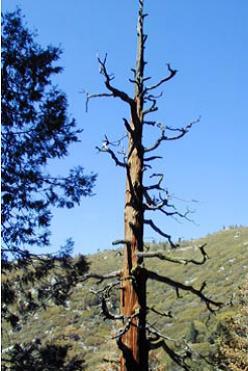Forest Wildlife

A functional forest has the ability to sustain communities of invertebrates and vertebrates allowing them to persist over time. Alterations of forest structures can impair some species for a short-term as when mowing of grass may negatively affect some reptiles until such time when the grass grows back; or long-term, the loss of structural nesting habitat in old-growth forest may take centuries to recruit leading to chronic declines in a population.
Many of the habitat attributes found in forests are the result of chaotic events such as insects, disease, fire, wind, slides, snow and lightening making it difficult to recruit peculiar elements such as trunk hollows, broken tops, and nest cavities that are essential for some species.
Training one’s eye to recognize these unique habitat elements is key when designing management options. In some situations, the best practice is to retain these types of elements since recruitment may be impossible under modern circumstances. For an overview of wildlife habitat components and how to maintain or enhance habitat for different species, please see Forest Stewardship Series 8 - Forest Wildlife.
More UC Resources:
The Sierra Nevada Adaptive Management Project website contains archived information on the California Spotted Owl and Pacific Fisher.
More resources:
California Wildlife Habitat Relationships is a state-of-the-art information system for California's wildlife. CWHR contains life history, geographic range, habitat relationships, and management information on 694 species of amphibians, reptiles, birds, and mammals known to occur in the state. CWHR products are available to anyone interested in understanding, conserving, and managing California's wildlife. Species lists, life histories, geographic range information and habitat classification are available online.
CalFire's 2017 CA Forest and Rangeland Assessment has a chapter on wildlife which describes the status and trends of California's wildlife.
CalFIRE published an issue of the Forestland Steward Newsletter on Balancing Wildlife Needs with Fuels Management - a Conundrum in Summer 2010.
